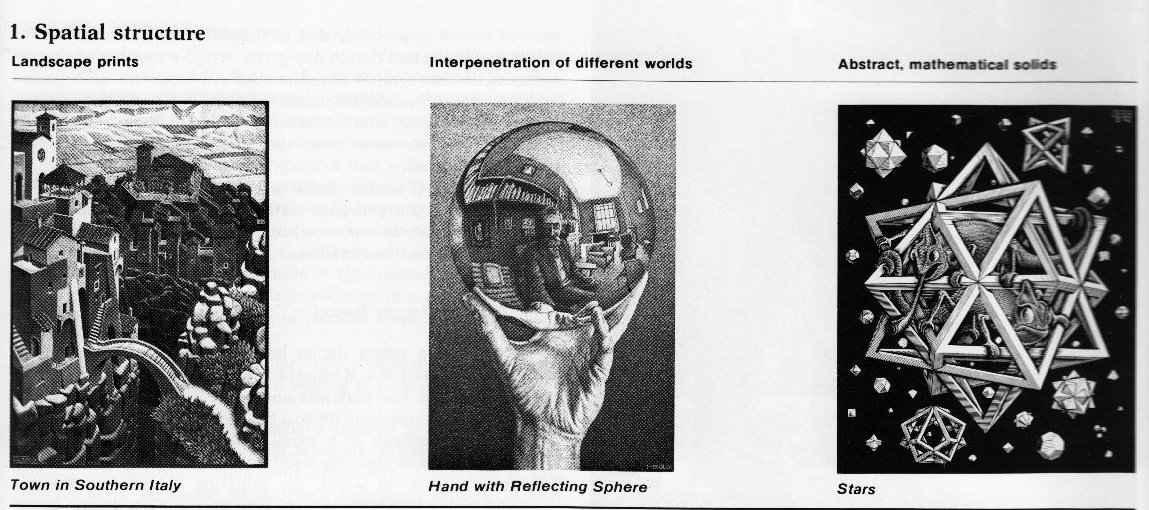|
2. Escher's Work: Spatial structure, flat surface structure and the relationship between themMost of Escher's work done after 1937 have a strong mathematical flavour. We can classify his mathematics-related works into three categories:
Escher was not so much interested in the picturesque of the landscapes, but rather, in the structure. If the structure was lacking, as for instance in ruins, he had no interest in the scene. After 1937 he no longer dealt with spatial structure in an analytical way, but produced a synthesis in which different spatial structures fitted together in a logical way.

After visiting the Alhambra and studying the old Moorish motifs, which basically represented tessellations (identical or graduated surface divisions) of the plane, Escher developed a whole system to do such periodic drawings. In his case, however, the surface is not filled up with congruent abstract geometric figures, but with shapes representing beings (birds, fish, crocodiles etc).

In these works, Escher subjects the laws of perspective to a critical view-point, and discovers new laws. The picture appears as the projection of a three dimensional object on a flat surface, though the figure couldn't exist in space.

Chronology of Escher's workEscher's creative periods can be classified as follows:
The prints depict usually landscapes and small towns in Italy and the Mediterranean coasts. The most famous are: "Castrovalva" (1930) - a lithograph of a small town in Abruzzi, "Still Life with Mirror" (1934), "Three Worlds" (1955). The essence of the representations is the transformation from the two-dimensional to the three-dimensional. The most representative works are: "Metamorphosis I" (1937), "Day and Night" (1938), "Doric Columns" (1945) , "Magic Mirror" (1946), "Drawing Hands"(1948) - this is one of his most popular works. Escher was very interested in non-conventional standpoints, in the idiosyncrasies of the perspective that was being used. The most famous prints are: "Other World" (1946), "Up and down" (1947), "Crystal" (1947), "Stars" (1948), "Waterfall" (1961), a series of Moebius strips ("I", "II" etc). These works are related to the concept of hyperbolic geometry. The most popular remain: "Smaller and smaller I" (1946), "Circle Limit III" (1959), "Snakes" (1969) - his last print. There area also some impossible figures dating from this period: "Convex and Concave" (1955), "Print Gallery" (1956), "Ascending and Descending"(1960). |